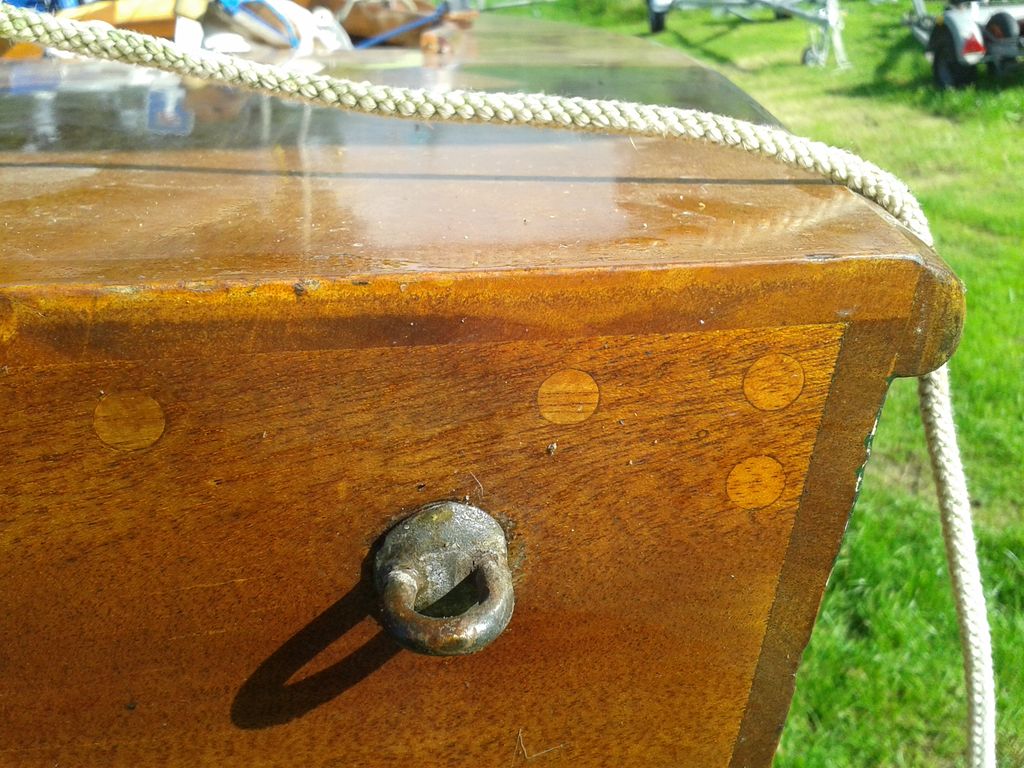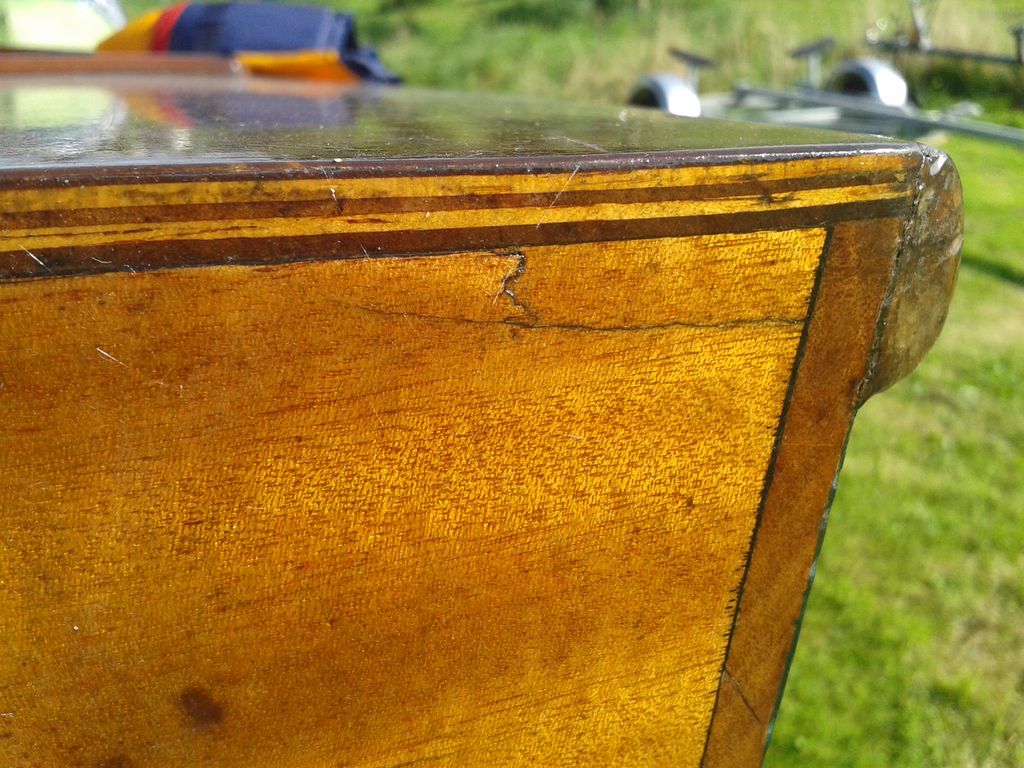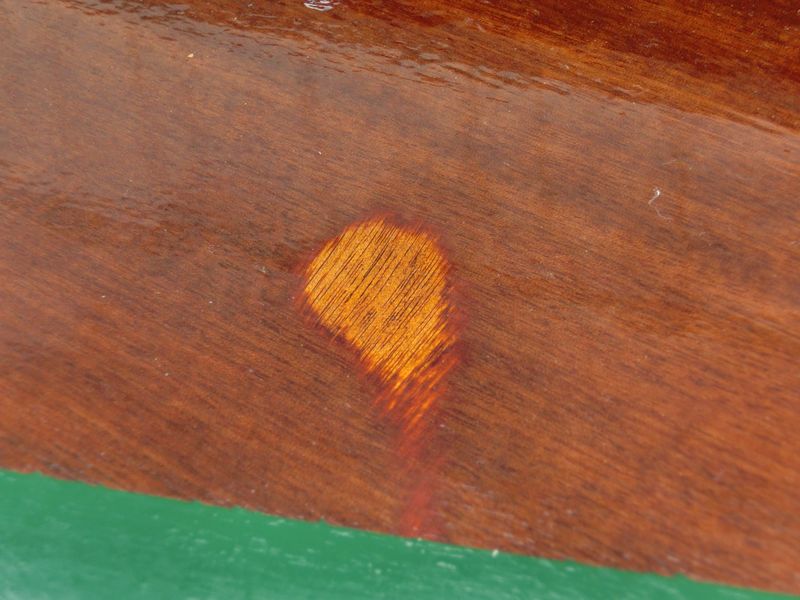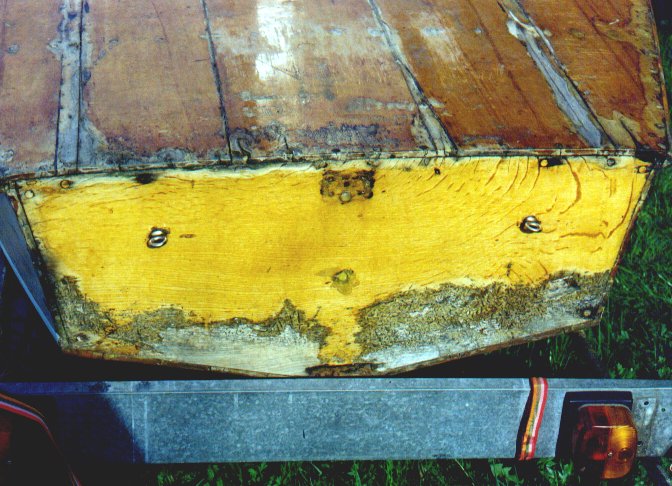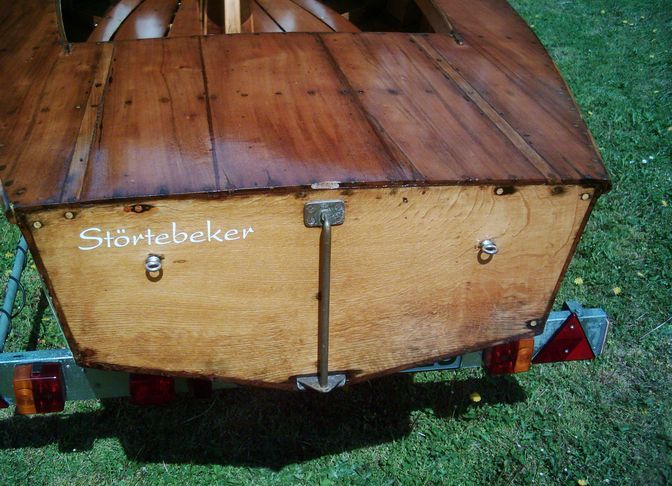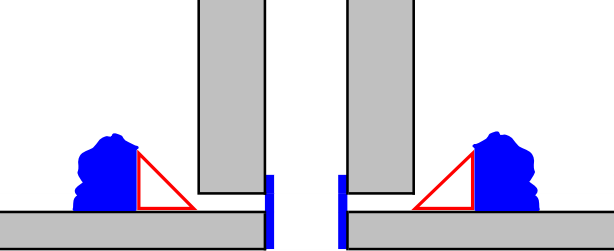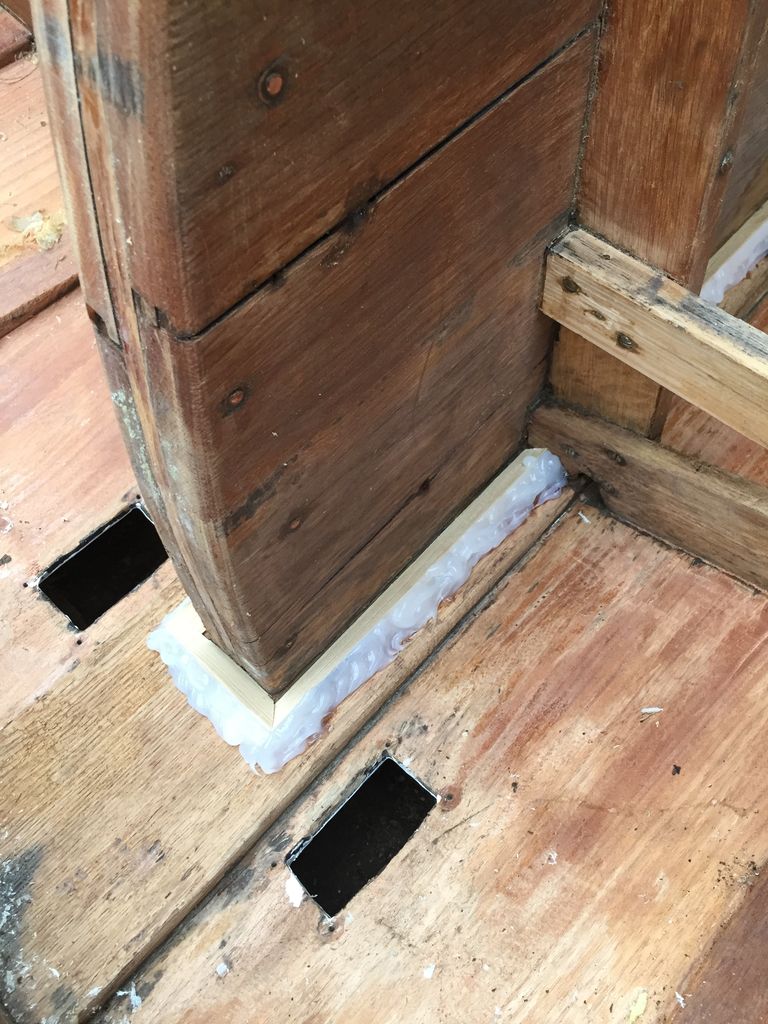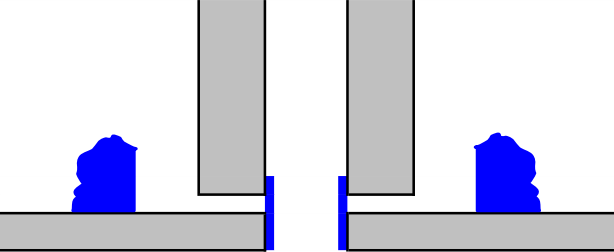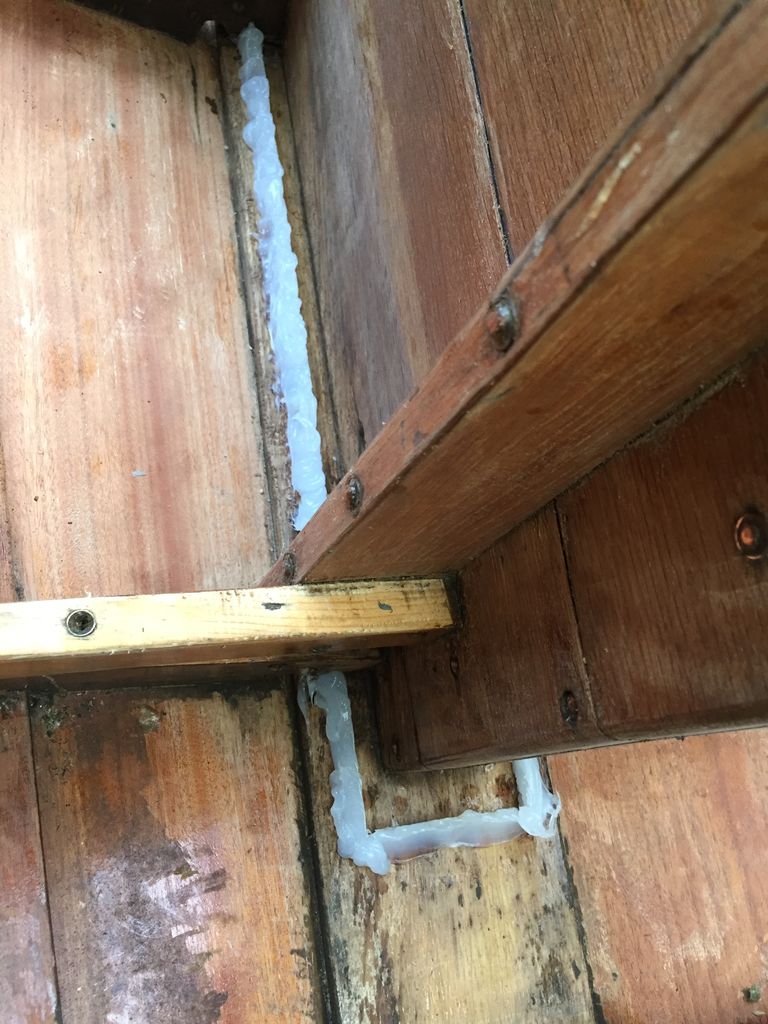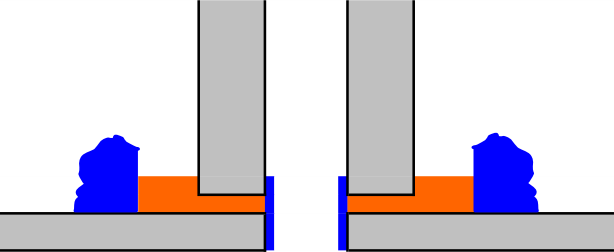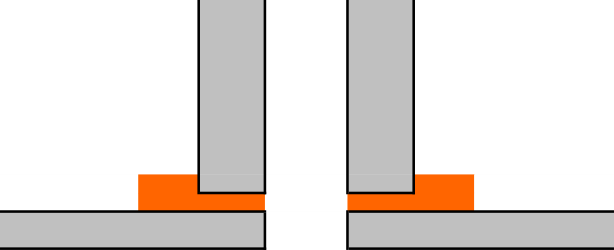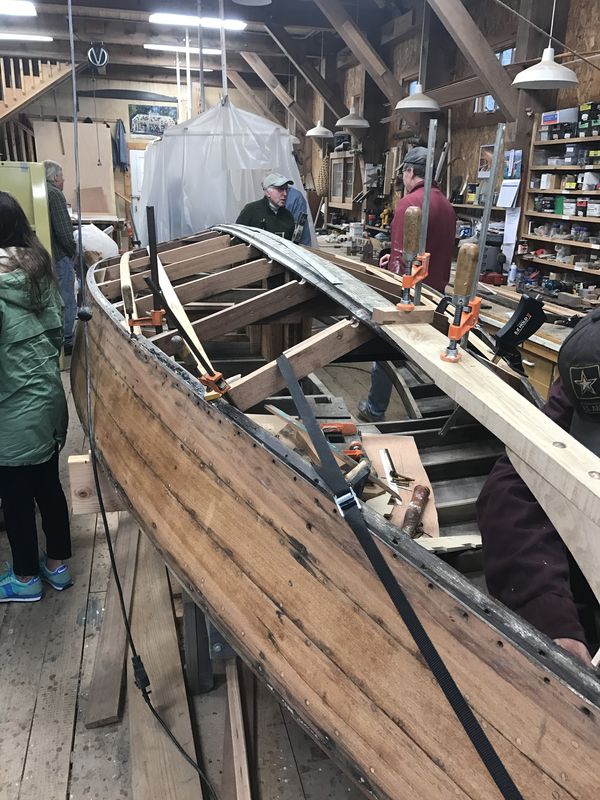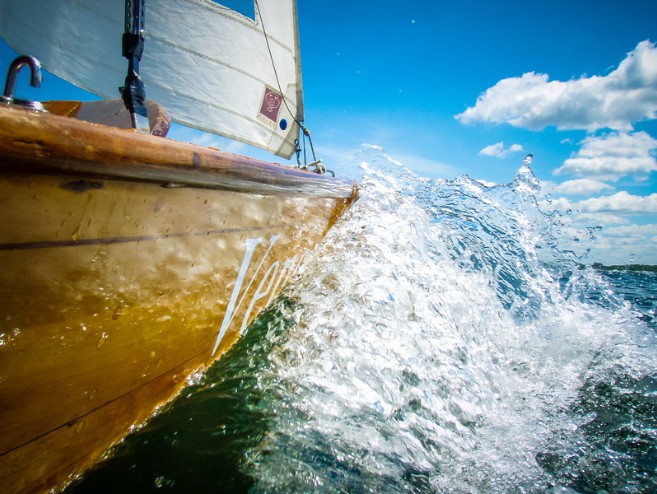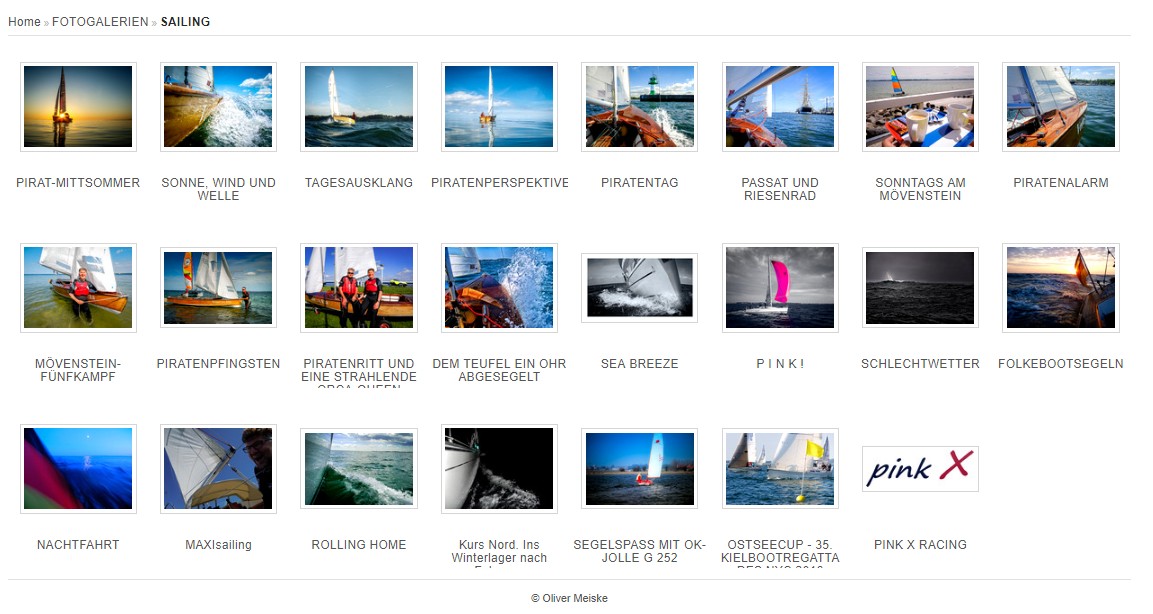Spätestens am Heckspiegel lasst sich zweifelsfrei feststellen, ob ein Deck aus Vollholz oder Sperrholz ist.
Als Faustregel kann man sagen: je einheitlicher, großflächiger und ohne Holzpfropfen das Deck erscheint, umso eher handelt es sich um ein Sperrholzdeck. Diese sind sehr schön anzusehen und nebenbei sehr stabil. Sie kommen häufig zum Einsatz, wenn ein Vollholzdeck nicht mehr gerettet werden kann. Meiner Schätzung nach hat heute nur noch jeder zweite Holzpirat ein Vollholzdeck.
Wurde zum Beispiel die Pflege vernachlässigt und muss ein Deck vom Lack befreit und geschliffen werden, hat man mit Sperrholz ein Problem. Man kann nicht viel Material abtragen (1-2mm maximal) bevor die nächste Holzlage in anderer Farbe, in anderer Faserrichtung hervortritt.
Vollholz ist angenehmer in der Bearbeitung. Natürlich ist hier ein übermäßiger Materialverlust durch das Schleifen auch nicht förderlich. Bei meinem Piraten war leider durch teilweise großflächige Verwitterung ein beherztes Schleifen unumgänglich.

